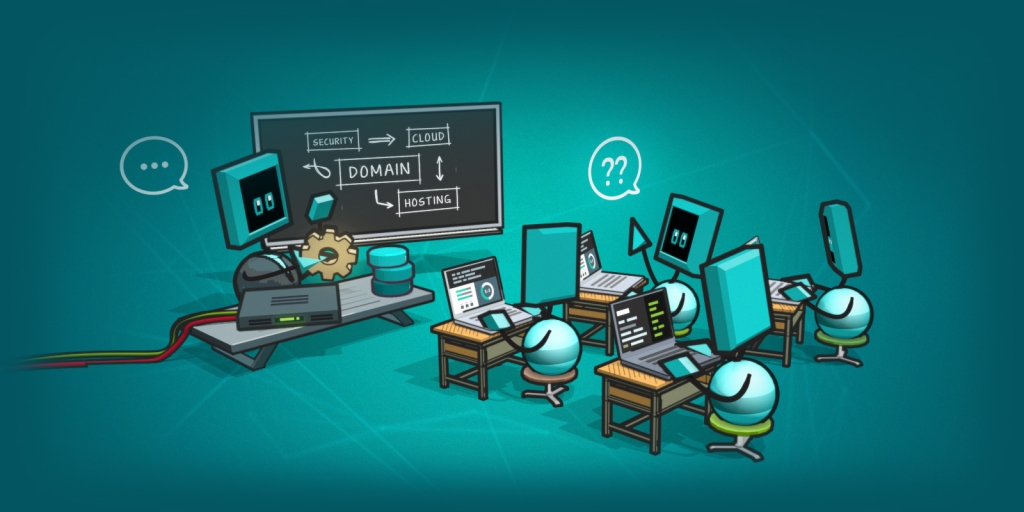Now that you’ve identified what you need to get out of it, it’s time to take the next step in choosing a CMS and start researching and comparing your options.
Write usage scenarios
A usage scenario is a narrative that describes how a user needs to accomplish a specific task.
There are two key pieces of information that you have after figuring out what you need to get out of your CMS—who will be involved in implementing and using it, and what features you need.
The next step is to use this information to write usage scenarios that connect these two.
Make a list of tasks
Previously, we asked who will install your CMS, who will use it, who needs information from it, and who will maintain it.
Take this list of people who will be involved in installing, using, and maintaining your CMS and make a list of tasks for each of them that they’ll be doing with the CMS.
When we say tasks, we’re not talking about rote actions, but specifically about the main things they need to do vis-a-vis the CMS.
So if your IT department will be installing your CMS, the tasks might include buying hosting, creating usersnames and passwords, communicating those to users, etc. If your marketing department is using the CMS, their tasks might be writing content, but think also about tasks like formatting content, adding design assets like images, etc.
This is a more concrete exercise if you are switching CMSes rather than starting fresh, since you’ll already have a baseline of tasks being performed on a regular basis. On the other hand, no one should expect to continue the exact same workflow as previously—after all, the negative constraints that have driven you to seek out a new CMS might also impact the way tasks are accomplished.
Write step-by-step narratives of your CMS usage
Now it’s time to connect these tasks to describe specific scenarios. These should be step-by-step descriptions of how a particular person needs to carry out a task.
⚠️ Tip: write your scenarios in plain English, don’t bog it down with technical or business jargon.
The main question here is how detailed to be.
It’s important to write your scenarios in a feature-agnostic way. That means that you shouldn’t include so much detail that the scenario virtually dictates a particular feature, nor should it be so detailed that it dictates a specific workflow.
Instead of steps in your scenario that look like, “Click the ‘Save’ button the right-hand toolbar,” write the step simply as “Save the content.”
Figure out your costs
With your scenarios in hand, along with your users and features you previously identified, you’ll have a pretty good idea of your needs.
Now it’s time to look at the other side of the equation—what are the costs.
As you figure out your budget, it’s important not to focus to exclusively on the price of the product itself, but the costs that installing and maintaining the CMS will entail.
This is a good point to think about how much resources you can devote in terms of your IT staff doing ongoing support of the CMS, whether that requires development, integration to existing software solutions you’re using, or just routine updates to the CMS software itself.
Think about how much you can spend on the infrastructure that will support your CMS, like website hosting, as well.
Building a shortlist of options
Now you’re ready to start researching your options. If there are specific features that you need, you can immediately start filtering by those.
You’ll want to make a list that stacks up your options in a way that lets you compare apples to apples. Every CMS option will try to sell you on their own unique selling points, which is good for developing new innovations but can make it hard for you to wade through the options.
Use your scenarios to build this list. That’s what we wrote them for. But here are some specific questions you might try to answer:
- What kind of support comes with this CMS? Are you more or less on your own? Is there dedicated support? Is there a community you can ask questions to?
- Who is the CMS oriented towards?
- Are features actually useful for needs you have now, in the present, not the future?
- Is the UI intuitive for your scenarios?
- Is the CMS scalable?
To help you with your research, some of the most commonly used CMSes out there are WordPress, Drupal, Joomla, Concrete CMS, and Alfresco. We’ll leave it to you to figure out if any of these meet your criteria.
As you research your options, narrow them down based on your budget and based on these criteria until you have a shortlist of two or three options. Then you can move into the last step.
Test your options
Before committing to a CMS, it’s important to try it out first. Go through the process of implementing a portion of your website in a particular CMS and have your users try adding content to it. Make sure they’re trying the different scenarios you identified. If you were comprehensive, that will ensure that you don’t forget to test for a particular use-case.
Keep the scenarios in mind as you evaluate how easy or hard it is to carry out the tasks you and your team will need to carry out while installing, using, and maintaining your CMS.
As you’re testing, you’ll also want to check for bugs and potential issues. And remember to test on different operating systems and screen sizes, both the back end and the front end.
And of course, you’ll need to keep track of what you find.
Pick your CMS
Once you’ve narrowed down your options and tested them, it’s time to weigh all the factors we’ve discussed here and commit to the best fit for you and your team.
Tagged in Simple Hosting



